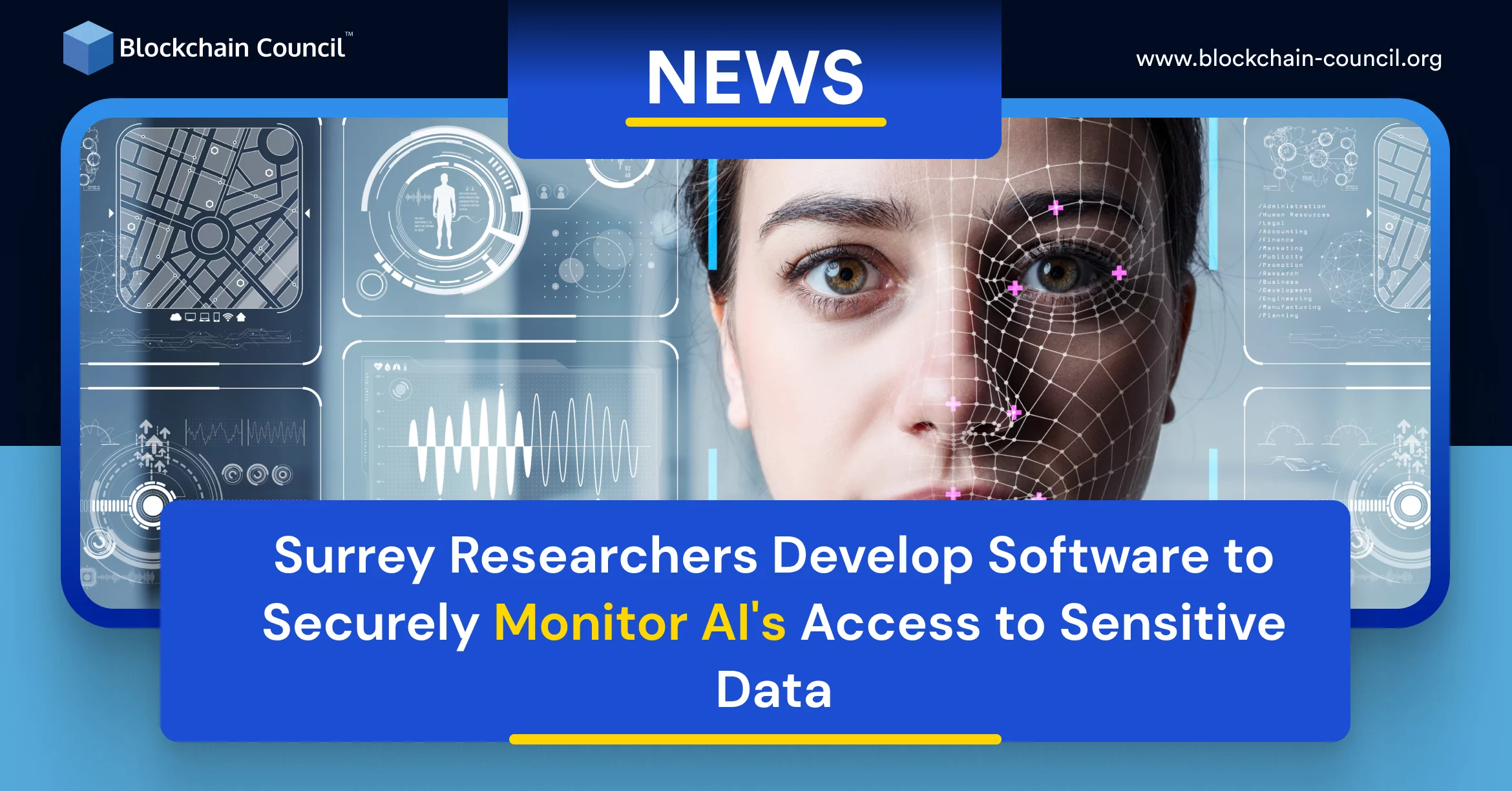
- Blockchain Council
- October 28, 2024
Precision farming is an approach that uses technology and data to keep a close eye on crops. Farmers gather information from different tools like sensors, satellites, drones, and weather forecasts. Using this data, they decide the best times and places to plant, irrigate, and apply fertilizers or pesticides.
The agricultural industry worldwide is facing various challenges, including climate changes, depletion of resources, and the growing demand for food. AI offers a way to help farmers address these problems. By predicting weather trends, using resources more wisely, and giving early warnings about pests or plant diseases, AI is making farming more effective.
Key Tools in AI-Led Farming
Drones and Remote Observation
AI-powered drones and sensors have become essential in farming. These drones take aerial images of fields, allowing farmers to assess crop conditions, spot pest damage, or identify soil issues. For example, drones can identify problems such as nutrient shortages or pest issues early. This lets farmers act quickly, protecting crops and reducing potential losses. Furthermore, AI can process these images, helping farmers plan better and make improvements in crop management.
Predictive Data Analysis
Another vital role of AI in farming is its ability to use predictive data analytics. It examines past data and real-time inputs from sensors, allowing farmers to forecast events like yields, pest attacks, and weather changes. For instance, weather prediction systems guide farmers in planning planting or irrigation more precisely. This not only helps in creating ideal conditions for crops but also helps farmers take preventive steps against unexpected environmental threats.
Robots Powered by AI and Automation
Robots that operate using AI are taking over several farm jobs. These tasks range from planting, weeding, to harvesting. The machines can work non-stop, reducing the need for manual labor while boosting farm efficiency. Robots, driven by AI, can tell crops apart from weeds, ensuring that herbicides are only used where necessary, reducing both costs and chemical use. This approach is a big improvement from older methods, which often required spraying chemicals over large fields.
Using the right data to manage crops efficiently is key in AI-driven precision farming. That’s why becoming a Certified Artificial Intelligence (AI) Developer™ is such a smart move for anyone looking to create advanced, data-based farming solutions.
Practical Examples of AI in Agriculture
Smart Irrigation Systems in India
In India, AI-powered irrigation systems are helping farmers manage water use more effectively. These systems gather data from moisture sensors and weather reports to give each part of a field the exact amount of water it needs. This cuts down water wastage and ensures plants get proper hydration. This kind of technology is crucial in places where water is scarce.
Disease Detection in Tomato Crops
A recent study showed that AI and computer vision could identify diseases in tomato plants with over 90% accuracy. Farmers use their phones to take pictures of their crops, and AI algorithms then analyze these images, detecting signs of diseases like blight. This gives farmers time to fix issues early, helping them avoid larger losses and improve yields.
AI-Enabled UAV Sprayers in China
In China, unmanned aerial vehicles (UAVs) equipped with AI systems are spraying pesticides and fertilizers with precision. These drones focus on specific areas, ensuring that the right amount of chemicals is applied, lowering costs and minimizing environmental effects. This method works especially well on big farms where manual spraying would take too much time and effort.
See & Spray
Another notable example of AI in farming is Blue River Technology’s “See & Spray” system. This uses computer vision to detect weeds and apply herbicides only where needed, cutting down on chemical use. It’s a great demonstration of how AI can help farmers save money and reduce environmental damage while increasing efficiency.
John Deere
Another practical case involves smart irrigation systems. These systems use real-time data from weather and soil conditions to calculate how much water crops need. Companies like John Deere have developed tractors powered by AI that autonomously water crops at the right intervals, conserving both energy and water.
Taranis
Taranis, another company, combines high-resolution aerial imagery with AI to help farmers identify early signs of disease or pest outbreaks. This allows them to act early, cutting down crop losses and using fewer pesticides. The system helps prevent widespread problems by addressing them as soon as they appear, improving overall crop health and yields.
Barriers to AI Adoption in Precision Farming
While AI offers clear advantages, there are challenges to adopting it in agriculture. The upfront costs of AI technologies like drones or sensors can be high. This can make it hard for small farms to invest in these solutions. Plus, using these systems often requires a certain level of technical knowledge, which not all farmers have.
Managing data and ensuring quality can also be difficult. AI relies heavily on large datasets to operate effectively, but collecting precise data, especially in remote areas, is not always easy. Additionally, there are regulatory concerns about data privacy and the use of drones in agriculture, which can slow down the spread of AI technologies.
Conclusion
AI is changing precision farming by giving farmers the data and tools they need to make smarter decisions. From better yields to reduced waste, AI’s role in agriculture is expanding quickly. As technology becomes more accessible and familiar to farmers, it will likely help meet rising food demands while supporting sustainable farming methods. Although there are some hurdles, integrating AI into farming suggests a future where agriculture is more efficient and eco-friendly.





































































 Guides
Guides News
News Blockchain
Blockchain Cryptocurrency
& Digital Assets
Cryptocurrency
& Digital Assets Web3
Web3 Metaverse & NFTs
Metaverse & NFTs
